Just because a houseplant is rare, doesn’t mean that it is high-maintenance. The philodendron micans is no exception to that!
Read on for this in-depth care guide on how to grow and best care for a philodendron micans.
Table of Contents
Philodendron Background
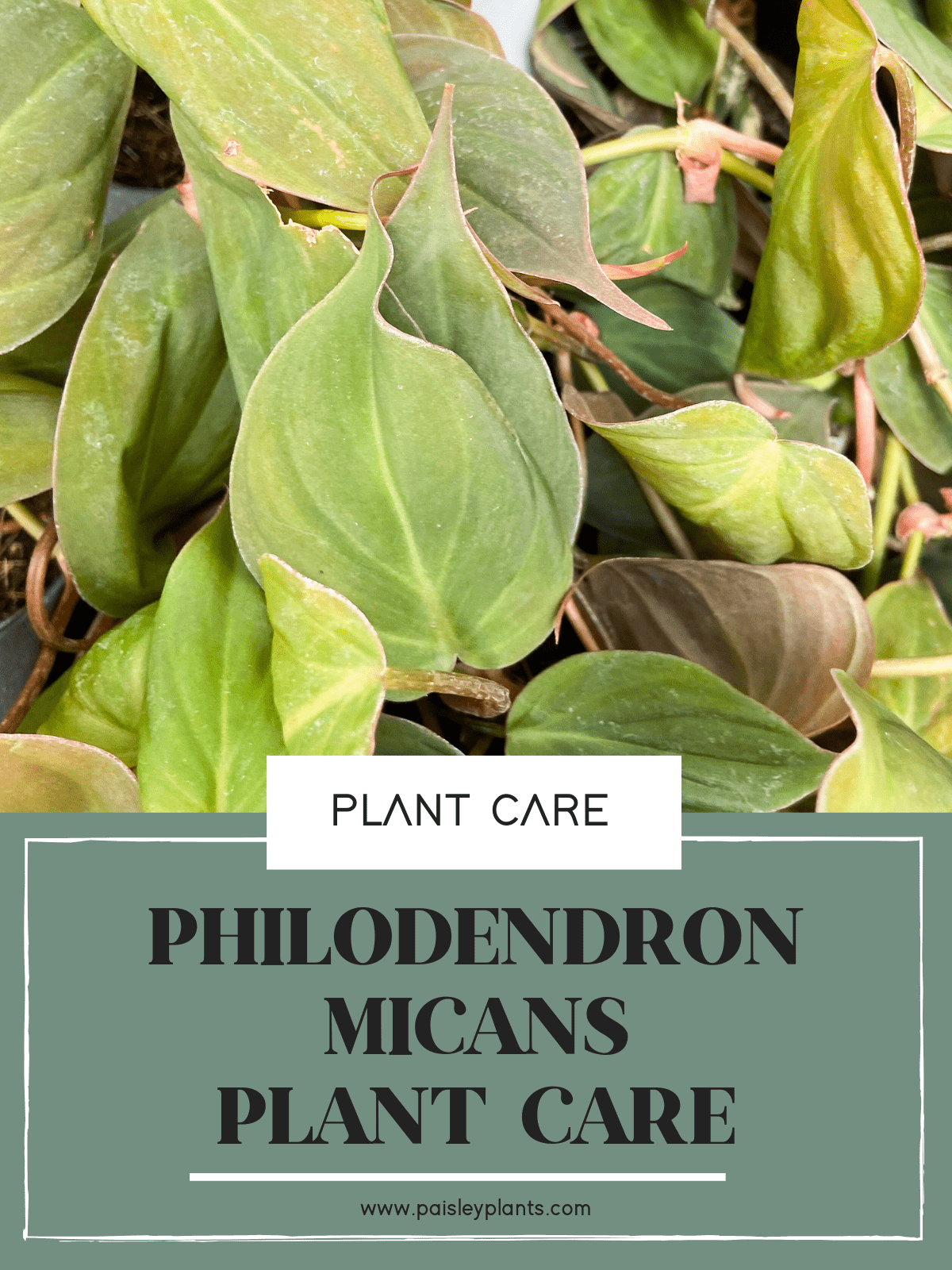
This post includes affiliate links.
Considered one of the rarer species of the philodendron genus, the philodendron micans (or the Philodendron hederaceum) is a rare and exotic beauty in the plant family. Native to the tropical regions of Mexico and the Caribbean, plant collectors far and wide seek out this plant for its unique foliage.
A philodendron mican plant is identifiable by its velvety, heart-shaped leaves. These leaves can vary in color depending on the sunlight. More light yields a reddish hue, whereas shady conditions yield green leaves.
The philodendron micans is a relatively medium-sized plant and only reaches 2 feet in length at full maturity. Because of the leaves’ velvet texture, the philodendron micans is also commonly referred to as the velvet-leaf philodendron.
Like many other houseplants, the philodendron micans is unfortunately a plant that is toxic to both animals and humans. We highly advise that because of the philodendron micans toxic nature that plant owners to exercise extreme caution keeping these plants near curious pets and children.
Find non-toxic pet friendly plants here!
Philodendron Plant Care
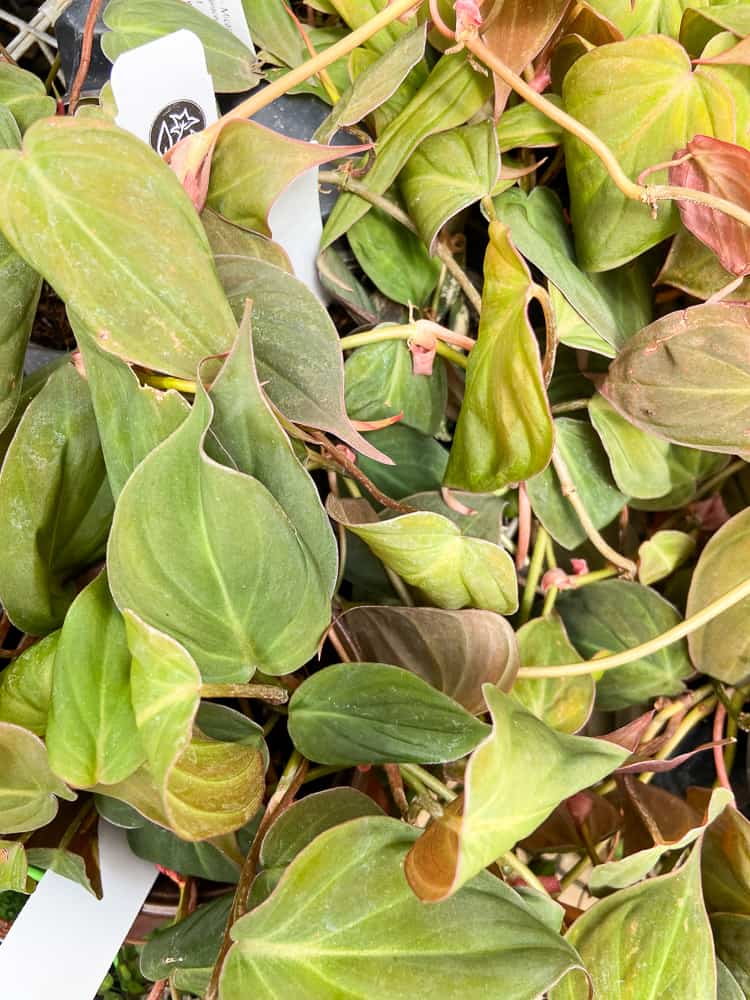
Sun & Light
Like many other houseplants, you can place your philodendron micans in a location that receives medium to bright indirect light. Philodendron micans grow where there is indirect light, if there are long periods of time that the plant is sitting in direct sun it can cause burnt leaves.
The amount of light that your philodendron receives is related to the hue of the leaves. Longer light exposure results in redder leaves.
Soil Type
The four most important aspects when finding a soil for your plant is light, well-draining, acidic, and moist.
If you would like to blend your own potting mix for your plants, we recommend equal parts of potting soil, orchid bark, perlite, and peat moss. Aim for a pH level in the mix that is between 5.5 and 6.5.
Water
The philodendron micans water intake is important and will need a soil that is consistently moist. That being said, it is equally important to make sure you water your plant properly and carefully as to avoid adding too much water to your plant.
A good rule of thumb with your philodendron is to water only when the top few inches of soil has dried out.
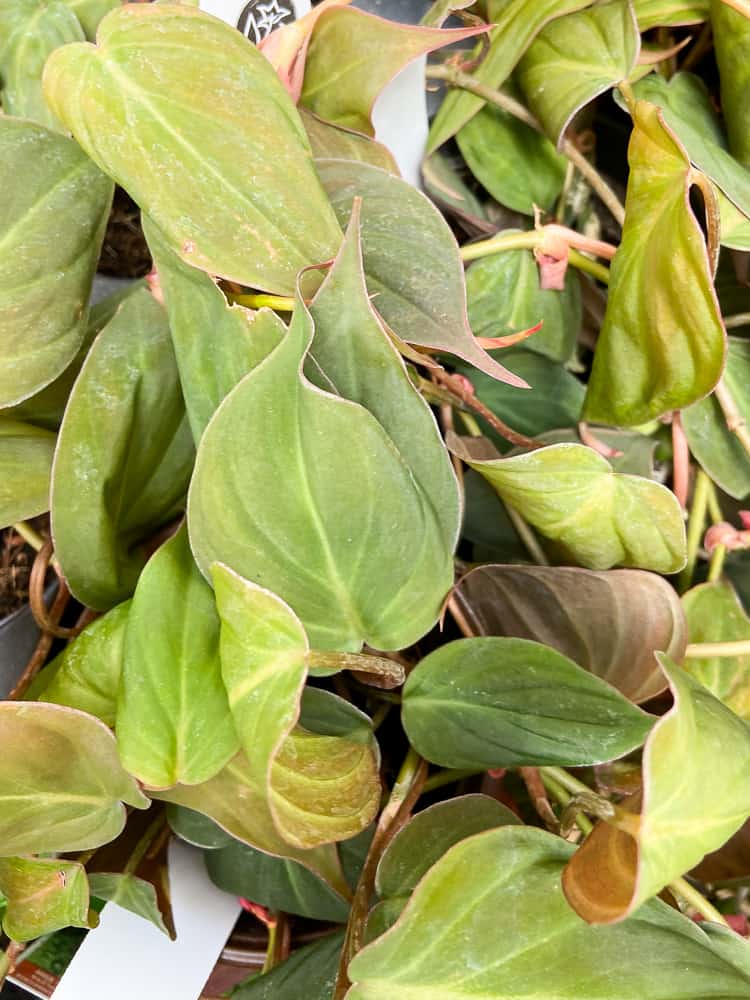
Fertilizer
Fertilizer is not a necessity when caring for a philodendron micans, but it is extremely helpful in encouraging strong vigorous growth. If you opt to fertilize your plants, search for a balanced houseplant fertilizer.
Apply a light amount of this fertilizer only one time a month throughout the spring and summer.
Temperature & Humidity
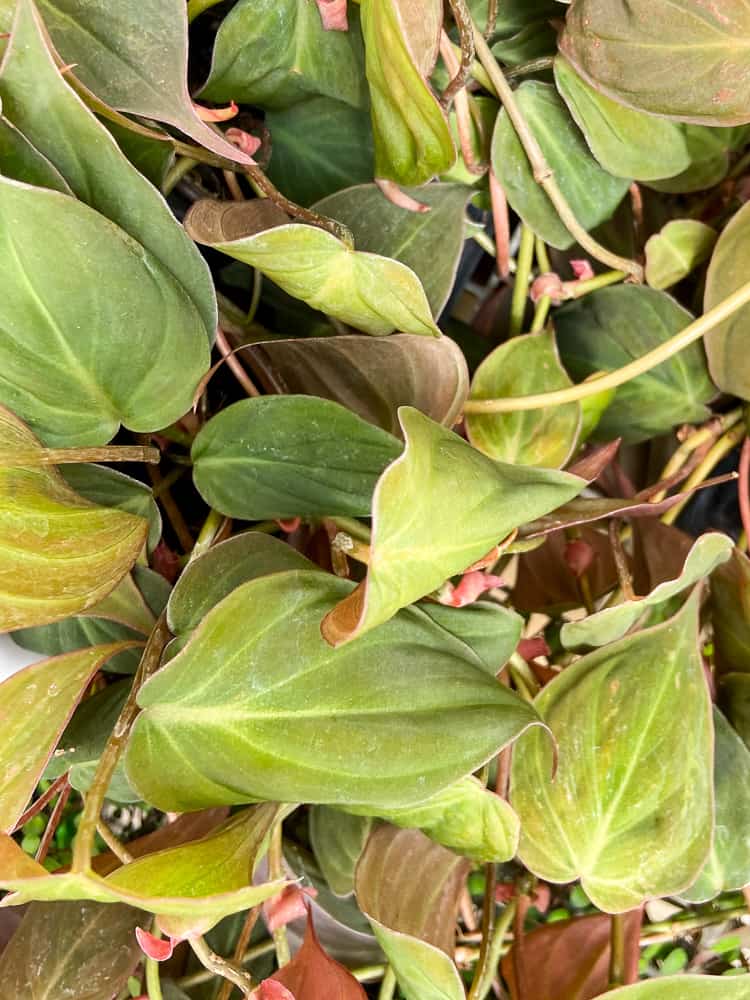
Because the philodendron micans is native to tropical climates, it is important for plant owners to do their best in replicating these warm, humid air conditions in order to obtain maximum health and growth.
The average household temperature range will suit the philodendron just fine, around 65° to 75°. We recommend avoiding temperatures lower than 60° for the health of your plants.
As for humidity, maintaining a level of at least 50% is suitable for your plant. One thing you can do is increase the humidity level of your plant by placing an electric humidifier in the same room as your philodendron as an easy way to care for your plant.
Pruning & Maintenance
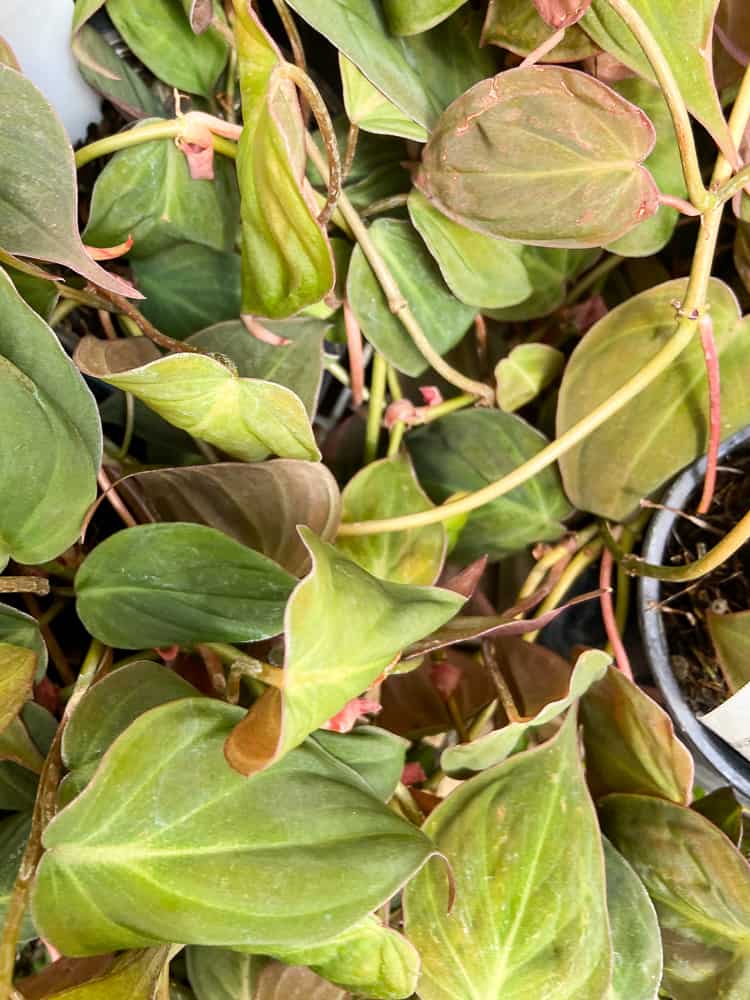
Routinely pruning your plant is important to help maintain bushy growth and prevent your plant from becoming sparse and leggy. The best time to prune and care for your plant is during the spring and summer months.
Start by pruning any dead, damaged, or brown foliage on your plants before moving onto healthy growth. You can opt to cut the length of your plant in order to control its size. Don’t throw away those healthy vine cuttings! You can use them for propagation and turn them into new plants!
We’ll discuss how to propagate mican plants in detail in our later section, “How to Propagate a Philodendron Micans.”
Choosing a Container & Repotting Plant
Select a pot for your philodendron micans plant that has ample drainage holes. Drainage helps your plant expel unnecessary water, keeping it comfortably moist in the pot for your plant.
The philodendron micans is a fast growing plant and will need frequent repotting. Expect to repot your philodendron once a year in order to avoid your plant becoming root bound from all the growth. When you notice roots growing out from the drainage holes or or the top of the pot, it would behoove you to repot your plant as soon as possible.
When sizing up your planter, size up to one that is 2 to 3 inches larger than the previous. Do not drastically change the size of your planter as this can cause shock to your plant’s root system and affect its growth.
Philodendron Micans Propagation
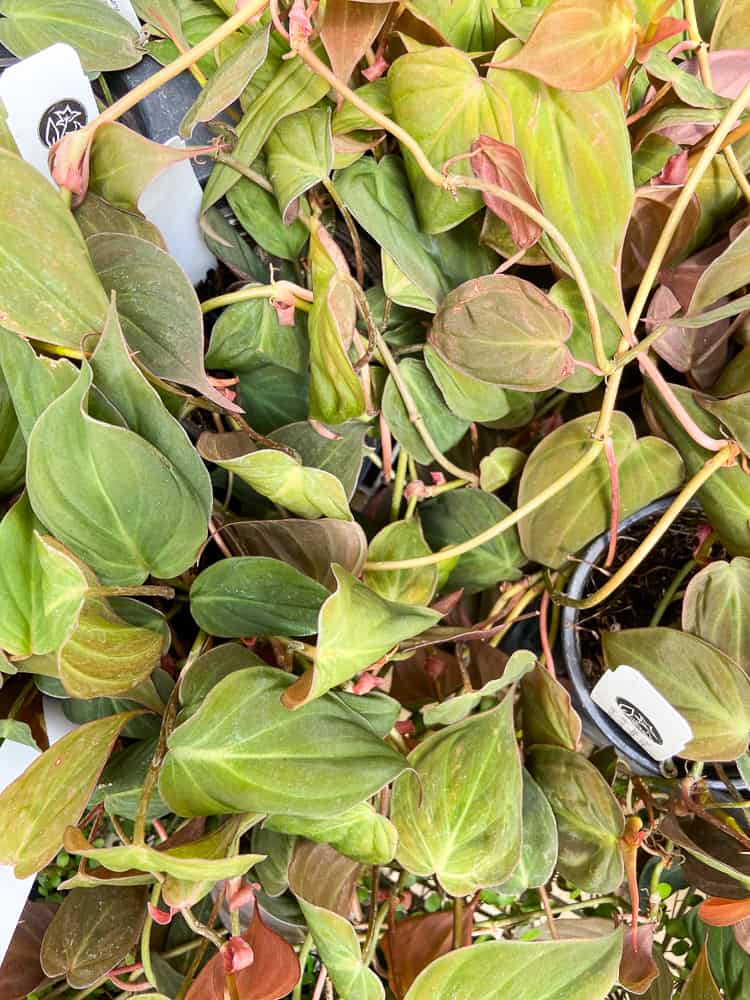
When it comes to the philodendron micans propagation process, it is very simple and easy, and you will only need a few materials. As we’ve discussed before, the micans is a very rare variety of philodendron.
With this easy propagation technique, you can multiply your philodendron micans and give them as gifts to your loved ones to care for instead of having to shop for a traditional gift.
Follow the steps below to learn the process for propagating philodendron micans.
- Take a healthy cutting from your philodendron plant. This cutting should have at least 4 to 5 leaf nodes.
- Remove the bottom few leaves, exposing the nodes. There should still be a few leaves at the top of the cutting.
- Fill a jar with water and place the cutting into the water, fully submerging the cut end as well as the exposed nodes in the water. You want the remaining leaves to still be above the rim of the glass.
- Place the jar in a location with bright, indirect light and change out the water every week.
- Within a month, you should notice roots forming from the cutting. Wait until the roots are at least 1 inch long before transplanting the cuttings.
- Prepare a pot with moist well-draining soil and add your cutting into the pot.
- Keep the soil consistently moist in the pot with enough access to light and water for the next few weeks until the plant has become established and observe the growth. Repeat the process with other cuttings to multiply your the growth of your plant!
Common Pests
It is very unfortunate, but the philodendron mican plants are susceptible to common house plant pests such as aphids, mealybugs, scale, and spider mites. These pests are sapsuckers and will latch onto your plants’ foliage, siphoning out their nutrients.
While nobody wants to deal with a pest infestation on their beloved plants, the silver lining is that all of these pests are controllable with the right methods and care that you can add to your daily routine.
One of the most popular approaches to pest control involves spraying neem oil on your affected plant. It is important to keep neem oil in stock for all of your plant needs because it is a light natural horticultural oil, making it a great choice for plant owners who do not want harsh chemicals around their plant.
It’s also important to prune any affected leaves on the plants that were eaten by the pests as well as check the pot for any lurking pests.
Common Diseases
Like other philodendrons, the micans can be susceptible to root rot. Root rot is a terrible bacterial disease that is brought upon by improper watering techniques.
While the philodendron micans prefers a soil that is moist, it is also important not to add too much water to your plant. Too much water and not enough drainage in the pot is a recipe for disaster. Signs of root rot include wilting, dying foliage and yellow leaves.
While root rot can be scary, it is treatable when plant owners act swiftly.
Follow these simple instructions on how to alleviate root rot:
- Remove your plant from its pot. Dispose of the soil and sterilize the inside of the container.
- Inspect your plant’s root system. Rotted roots are black and mushy, as opposed to healthy roots that are firm and white.
- Using a pair of sterile scissors, cut all signs of rot.
- After the rot and cuttings are cleared, repot your plant using fresh soil.
- Moving forward, it is important to water and care for your plant properly. Always make sure that the soil is moist, but not waterlogged. Make sure it is getting the recommended amount of light. Wait for the top layer of soil to dry out before adding water to your plant again and watch it grow in the appropriate light. Keeping a watchful eye on your mican is a small price to pay in order to keep it healthy.
Where to Buy
FAQ
Philodendron micans loves to climb. In fact, giving this plant something to climb is the best way to get bigger, healthy leaves and a more mature plant.
No, the philodendron micans prefers to live in an environment that is consistently moist. We do not recommend allowing your micans’ soil to dry out completely, as this can cause the velvet leaves of your plant to curl. Only allow the top 2 to 3 inches of soil to dry out before adding water to your micans in order to keep the leaves looking healthy and fresh.
In addition to keeping the philodendron micans soil watered, we recommend maintaining an air humidity level of at least 50%. The philodendron micans are plants that are native to tropical environments where the climate is warm and humid. In order to maintain and care for a healthy plant, it is of the utmost importance for plant owners to replicate these natural environments with the proper light, humidity, and water levels.
Like a lot of other philodendrons, velvet leaf philodendron plants enjoy bright indirect light; too much direct light can burn the leaves. They can tolerate slightly lower levels of light as houseplants, but the leaves will be smaller.
In order for your plant to grow nice and healthy, it’s important to keep the soil for your philodendron micans consistently moist, but also equally important not to give your plant too much water.
In Conclusion
Rare? Yes. Beautiful? Yes. Tropical? Yes. Difficult to grow? Not at all! The philodendron micans may be a rare species of philodendron, but it is by no means difficult to care for.
As long as you have our ultimate care guide by your side, you’ll raise a healthy and happy philodendron micans with gorgeous leaves in no time at all!
Looking for more Philodendron guides? Head to one of these plant posts!

